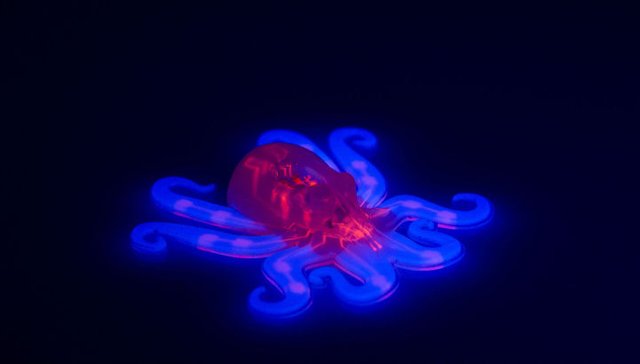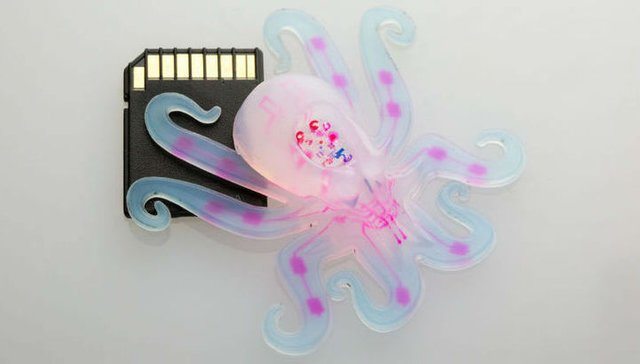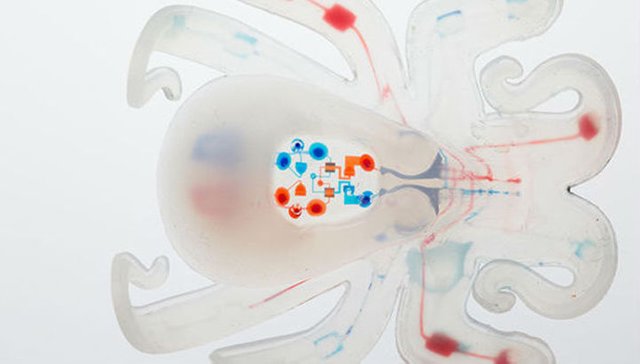Unique autonomous "octobot" opens the era of completely soft robots
Photo Ryan Truby, Michael Wehner, Lori Sanders, Harvard University.
The interest of engineers to the soft robots in recent years is growing rapidly. Their potential in some areas, especially where required delicacy and accuracy in the execution of their work, many times, far beyond the hard terminatorbootable counterparts. A team of scientists and engineers engaged in a kind of race on the development of soft-bodied creatures.
Until now, attempts to make the robot more soft and flexible depends on the fact that it was impossible to do without some hard components, power sources and electronic control system. Many models had external power, but it is the web of cables in the bargain and, therefore, limits to autonomy.
Against this background, a team of researchers from Harvard University led by Robert wood (Robert Wood) and Jennifer Lewis (Jennifer Lewis) has made a breakthrough. (In fairness, we note that they initially relied on some hard and interfering components.) The result of their work at the moment has become a completely Autonomous robot, made entirely of soft and flexible materials.
Their appearance and the name "octobot" (octobot) shall octopuses that do not get tired marvel of robotics around the world.
"Octobot" measuring only about two inches is made of silicone. This material is poured into a mold, then using a 3D printer with special ink inside of the workpiece has implemented a system of canals and reservoirs for future microfluidic systems. Ink when heated evaporate, leaving the required cavity.
Exactly microfluidic system is essentially the brain of the robot. It directs the flow of liquid fuel through the channels, which are equipped with valves operating in dependence on pressure in specific parts of the system. It is very similar to an ordinary electric circuit, except instead of electrons in the body "of octobot" move the liquid and gas.
The fuel for the "octobot serves as a 50% solution of hydrogen peroxide, which reacts violently with platinum catalyst with the release of large amounts of oxygen. The gas moves along the channels, creating the necessary for the motion of the robot, the pressure in its different parts and directing the fluid flow further.
"Sources of fuel for various soft robots have always assumed some hard components," says Dr. wood in a press release Harvard. "It's wonderful, we were able to replace their conventional chemical decomposition reaction of hydrogen peroxide on the catalyst.
At this stage, "octobot" works — namely, actively moving his tentacles about 8 minutes, while consuming one ounce of "fuel". While the device is not designed to perform any purpose. Now it's just a demonstration of an entirely new concept in soft robotics.
The authors argue that the simplicity of execution "octobot" allows to count on successful creation of more complex devices. They set themselves the task of developing a robot that will independently swim, crawl and interact with the environment.
Detailed description of the technology can be found by reading the article published in Nature.
We will add that earlier Lewis had created the technology of 3D printing lithium-ion batteries, and wood is known to readers.Science project robot-bees and system soft grip objects for underwater vehicles. Source:vesti.ru



This is cool. I didn't know that the future is here. Our world is upgrading so fast to keep track of every new technology. By the way thanks for sharing with us @konstantin
Thank you.